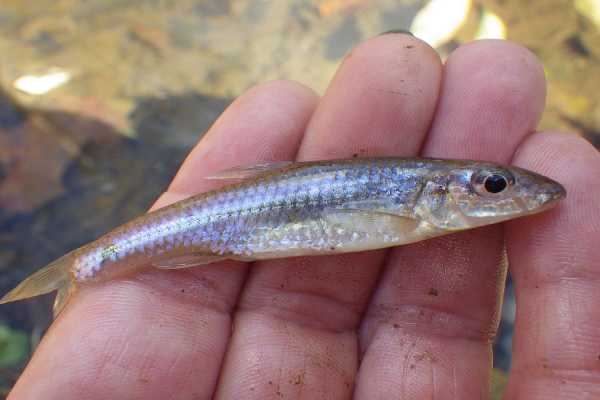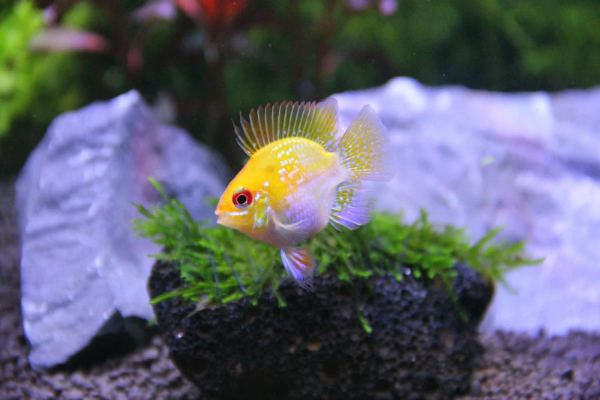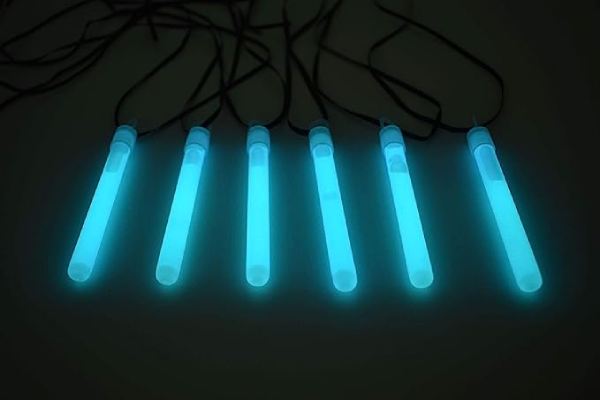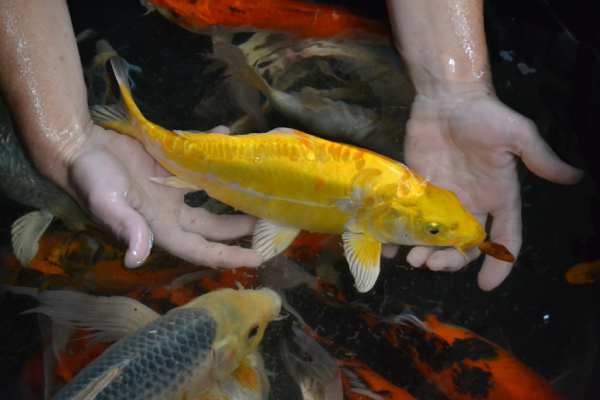Can You Keep Trout In Your Garden Pond? Here’s What To Know
Having a garden pond can bring serenity and beauty to your outdoor space, and many pond owners often wonder if they can keep trout in their ponds, hence the query “Can trout live in a pond”? If you are one of such people, this blog post is for you.
You know, trout are popular fish due to their attractive colors and swift swimming speeds. However, there are a number of factors to put into consideration before introducing trout to your backyard pond.
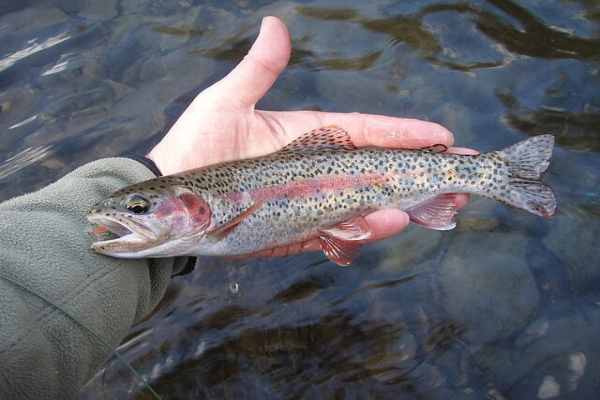
In this blog post, we will explore the feasibility of keeping trout in your garden pond, address common questions, and provide essential information to help you make an informed decision. But first, let’s quickly go over the types of trout.
Types of trout
There are numerous types of trout which include;
- Rainbow Trout
- Cutthroat
- Dolly Varden
- Brown trout
- Brook trout
- Bull trout
- Lake trout
- Golden trout
- Arctic Char
- Tiger trout
- Splake
- Gila
- Marble
- Palomino trout
What Do Trout Need to Live?
Freshwater trout are extremely desirable due to their high market value and striking beauty. Whether you’re a pond owner or a fish enthusiast, knowing what trout need to thrive is crucial. Now, here is what trout need to survive.
Cold Water
Trout, unlike other pond fish, can only survive in colder water temperatures. They do best in temperatures between 10 and 15 degrees Celsius (50 and 60 Fahrenheit).
Trout can only handle moderately warm water, in contrast to warm-water fish like bass and catfish. Reduced oxygen levels, increased stress, and even death have all been linked to rising temperatures. Therefore, maintaining trout in colder water is essential for their wellbeing and survival.
Pond Depth
The ideal conditions for trout depend critically on the pond’s depth. Trout like deeper ponds because they are cooler, safer from predators, and have more places to hide.
If you want to give your trout a good living space with consistent temperatures and plenty of room to swim, you should put them at least 6 to 8 feet (1.8 to 2.4 meters) down.
The health of the ecosystem in which trout thrive depends on a number of factors, including the depth, which affects the availability of nutrients and the growth of aquatic vegetation.
Food Supply
Trout, like any other fish, need a steady diet in order to flourish. They eat aquatic insects, crustaceans, fish fry, and even juvenile fish occasionally.
In order to meet the nutritional requirements of trout, it is essential to establish a diverse and abundant food chain that can support their nutritional needs.
This can be accomplished with the help of aquatic plants, which offer protection and nourishment to the insects and other invertebrates that your trout eat.
Now that you have a clear knowledge of what trout need to survive, you may be interested in keeping trout, but how do you build the perfect trout pond? Well, keep scrolling, as we will address that in the next section.
How To Build A Trout Pond
Building a trout pond may be a rewarding and fun job. However, when building a trout pond, it’s important to think ahead and pay close attention to detail for the sake of your trout.
From deciding on a suitable site to installing crucial components like filtration systems, in this section, we will walk you through the whole process of constructing a trout pond.
Choose the Location for Your Pond
Selecting an appropriate site is key to the achievement of your trout pond goals. Take into account the following: sunlight, slope and drainage, accessibility, and surroundings.
Determine the Trout Stocking Capacity
The size and layout of your pond depend on how many trout you intend to keep in it. Think about things like the size of the pond, how deep the water is, and how many trout you want to stock. Don’t forget that overpopulation in the pond can lower water quality and cause stress for your trout.
Design Your Pond and Sketch It Out
Make a sketch of your pond’s layout, detailing its size and any special elements you plan to incorporate. Consider the following elements: size and shape, water depth, planting areas, inlets, and outlets.
Dig the Ground
After you’ve settled on a plan for your trout pond, the next step is to dig it. To ensure accuracy and efficiency, use excavation equipment or hire an expert.
Remove rocks, roots, or debris that could puncture the liner as you dig the pond to the required depth.
Install a Pond Underlayment
Before putting in the pond liner, it’s important to lay down a pond underlayment. This coating helps protect the liner from abrasions and punctures, extending its lifespan. When building a pond, it is recommended that you use geotextile fabric or a rubber underlayment.
Install a Liner
Carefully lay the pond liner over the underlayment so that it completely fills the space created by the excavation and overhangs the pond’s perimeter.
Typically, trout pond liners are made from EPDM rubber or PVC due to their durability. Get rid of any creases or folds so that the seal is as secure as possible.
Use Rocks to Secure the Liner
Place pebbles or boulders around the pond’s perimeter to keep the liner from moving or floating. The liner will be held in place securely by these rocks, which will also add to the area’s natural beauty. Be cautious not to pierce the liner when you arrange the rocks.
Add an Air Pump and Water Filter
Invest in an air pump and filtration system to ensure the health of your trout, as this prevents water contamination. Installing an air pump and filter system also helps keep your pond’s water clean.
How To Feed Your Trout
Trout needs a well-balanced diet to thrive in terms of size, health, and longevity. Understanding their dietary needs at different stages of development is crucial for maintaining optimal conditions in their habitat
In this section, we will walk you through how to effectively feed trout at each stage of their development.
Swim-Up Stage
When trout hatch from their eggs and begin to actively swim, this is known as the swim-up stage. Trout fry are extremely juvenile and dependent on their yolk sacs for survival. After they consume the yolk sacs, they will begin foraging.
During the swim-up stage, it is important to provide small, easily digestible food sources. Finely ground pellets or powdered diets, which are commercially available, can be an ideal choice for feeding trout fry.
These foods are formulated to provide the vitamins, minerals, proteins, and lipids that your trout needs to grow and thrive.
Trout Measuring 1 Inch or More in Size
When trout reach 1 inch in length, they can progress to a more substantial diet. Now that they’ve evolved, they’re perfectly capable of consuming both natural and artificial foods.
Alternatives include highly powdered pellets, crushed flakes, or even aquatic insects like daphnia or brine shrimp.
At this stage, trout require specialized commercial feed for optimal growth and development. The pellet shape is common for these nutrient-rich meals.
It’s preferable to feed them multiple times a day with very small portions because overfeeding might cause water contamination.
Trout Measuring More Than 1 1/2 Inches
At this stage, they need more protein, and there are more feasible options, such as bigger aquatic invertebrates, insect larvae, and even small earthworms. As they grow, you can continue to feed them trout pellets that you buy in stores.
The trout’s appetite must be monitored, and feedings must be adjusted accordingly. Feed them a small amount of food a day and monitor their eating habits to ensure they finish their food quickly.
Trout Measuring More Than 2 1/2 Inches
Once your trout exceed 2 1/2 inches in length, their diet should predominantly consist of a varied mix of live or frozen foods. At this stage, they rely more on live prey
You can also feed them store-bought frozen bloodworms or brine shrimp, bloodworms, larger aquatic insects, tiny fish, or earthworms.
Conclusion
While keeping trout in a backyard pond may seem enticing, you’ll need to take into account not only the fish’s requirements but also the pond’s physical constraints. Trout can only thrive in cold, oxygenated water with plenty of space to swim and feed.
Building a pond for your trout entails excavating a hole, laying down an underlayment and liner, and then filling it. Also, investing in a water filtration system and air pump is crucial for protecting water quality. To keep trout in your garden pond, you also have to be knowledgeable about the types of food they eat at each developmental stage.
Obviously, the common question, “Can you keep trout in a garden pond?” has been answered in detail in this blog post. So, feel free to use the guidelines in this blog post to create a peaceful and lovely trout pond in your garden.
FAQs
Yes, you can keep trout in your garden pond. However, you will have to take into consideration the following factors; depth of your pond, volume, and temperature of the water, food, oxygen level, pond design, and structure.
To thrive, trout need to swim in water that’s between 10 and 15 degrees Celsius (50 and 60 Fahrenheit). In order to swim and feed comfortably, they require a large body of clean, oxygenated water. It’s also important to have access to appropriate food sources, like water beetles and tiny fish.
Yes, you can modify your garden pond to accommodate trout, but it might be challenging. Major adjustments need to be made to the pond’s depth, water quality, and aeration systems before this can be implemented successfully.

![How Much Does It Cost To Dig A Pond? [Rough Estimate]](https://pondmemo.com/wp-content/uploads/2023/05/how-much-does-it-cost-to-dig-a-pond-img_1-img.jpg)
